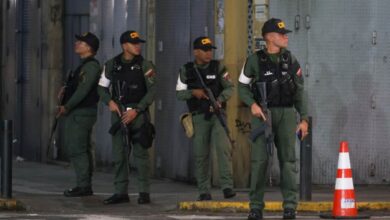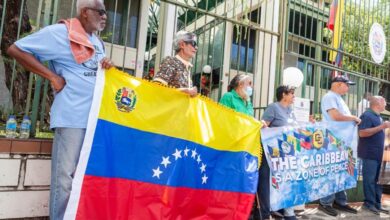Everything you need to know to understand the uncontrollable crisis in Nicaragua
100 days have passed since the protests began and although there are more than 300 dead and 2,000 injured, the riots seem far to end

A little less than 40 years ago, Daniel Ortega was an icon of freedom and progress. He had become one of the most recognized leaders of the Sandinista revolution that overthrew the dictatorship of the Somoza family. However, today, Ortega is the main responsible for the H1: crisis that Nicaragua is going through and has become a symbol of everything he fought against: repression, corruption and violation of human rights. Although everything seems to have started on April 18, after the government presented a reform to the pension and social security system, which a large part of the country considered unfair, in reality the H1: crisis has a longer history.
Leer en español: Todo lo que necesita saber para entender la incontrolable crisis de Nicaragua
H2: Corruption and authoritarianism
The recent history of Nicaragua is tainted by several corruption scandals, which boomed with the presidency of Arnoldo Alemán. It is important to bear in mind that Daniel Ortega, who had already been president between 1985 and 1990, allied with Alemán to reach an agreement that would benefit their respective parties and the Nicaraguan Catholic Church, which used its influence to back the pact.
However, the doubts about Ortega were forgotten for a time when he returned to power in 2006 and established free education and health. In the following years, the figure of Ortega would be associated more and more with authoritarianism, first with the controversial Supreme Court ruling that allowed him to be re-elected in 2012, and then with the dubious electoral process of 2016, in which several opposition deputies were dismissed and Ortega himself prevented international observation.
Also read: Nicaragua: The failure of the revolution?
H2: Reform of the Nicaraguan Social Security Institute (INSS)
The recent H1: Nicaragua crisis began after the government published a new pension and social security reform on April 18. This reform planned to increase the contribution percentage of employees and employers, while reducing pensions. On the same day, protests were held in the city of León, where the INSS is located, and in Managua. Many of the opponents accused the State of mismanagement and corruption with the funds of that institution. In both cases, there were clashes with groups that defended the reform and in the following days the protests spread throughout the country, with the primary participation of the students. Several died in those early days and public television channels that reported on the protests were censored. Although on April 22, President Ortega revoked the reform and invoked a dialogue table that would be mediated by the Episcopal Conference, the protests continued with the support of the peasant movement to demand the resignation of Ortega.
H2: Repression and violations of human rights
After the government was required to release the detainees during the protests, several complaints of torture arose. At the same time, the anti-riot police increasingly exercised violence to contain the protests and masked paramilitaries with high-caliber weapons appeared in the scene. For these reasons, the students who led the protests, the University Movement April 19, refused to participate in the dialogue talks.
The government has made several attempts to control the official version of the H1: crisis, describing the opponents as "tiny hateful groups" (according to the words of Vice President Rosario Murillo, Ortega's wife, issued in a speech on October 19). April), denying any link with the paramilitary groups that have murdered several students and even branded the opposition students of "paramilitaries who have attacked the Nicaraguan police that intended to protect the population during the revolts", as Ortega did last Monday at the US Fox News channel.
H2: Back to the past
In a press conference on July 10, the Nicaraguan Association for Human Rights (ANPDH) declared a record of 351 citizens dead, 2100 injured (many without medical assistance), and 329 kidnappings and disappearances. The state of the H1: crisis already begins to resemble the years of the Nicaraguan civil war, this time with Ortega imitating who was once his enemy, the dictator Anastasio Somoza.
In an act of total irony, President Ortega commemorated 39 years of the Sandinista revolution on July 19, and accused the Episcopal Conference – which served as a mediator between the opposition and the government – of coup leaders. Meanwhile, torture and extrajudicial executions do not stop. The opposition has managed to block several roads in the country to attract international attention by stopping trade routes, essential for the Central American economy.
Beyond the attempt to reform, the opposition (which at this point includes the vast majority of citizens, including businessmen, students, peasants and even Sandinistas) accuses Ortega of trying to prevail in power and establish a dynasty like any other. Somoza had it once, because several of his relatives occupy important public positions. It demands, above all, the right to protest, freedom of the press and that Ortega call early elections, but this one flatly refuses and the H1: crisis does not seem to have a close end.
LatinAmerican Post | Nicolás Rodríguez
Translated from “Todo lo que necesita saber para entender la incontrolable crisis de Nicaragua”




